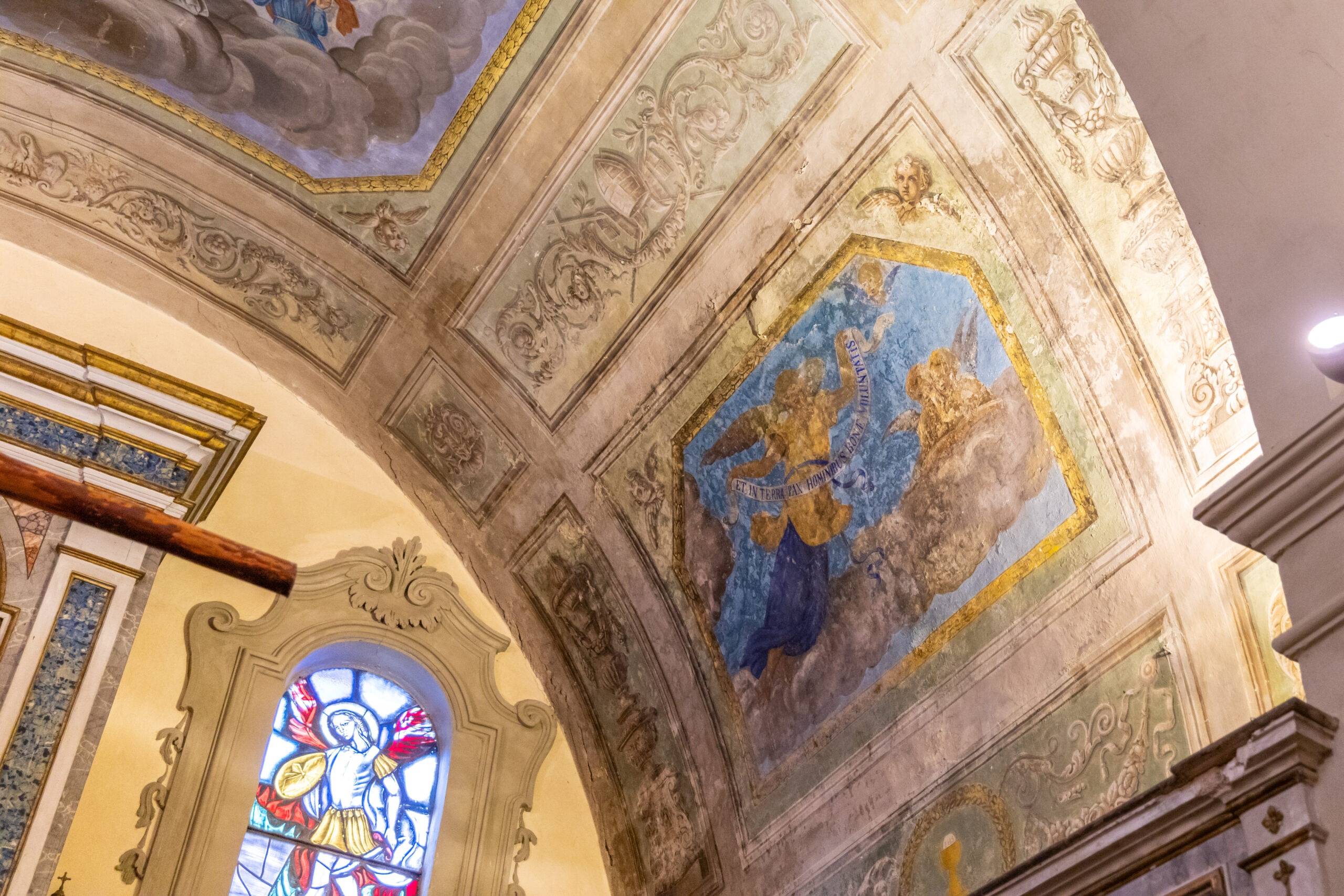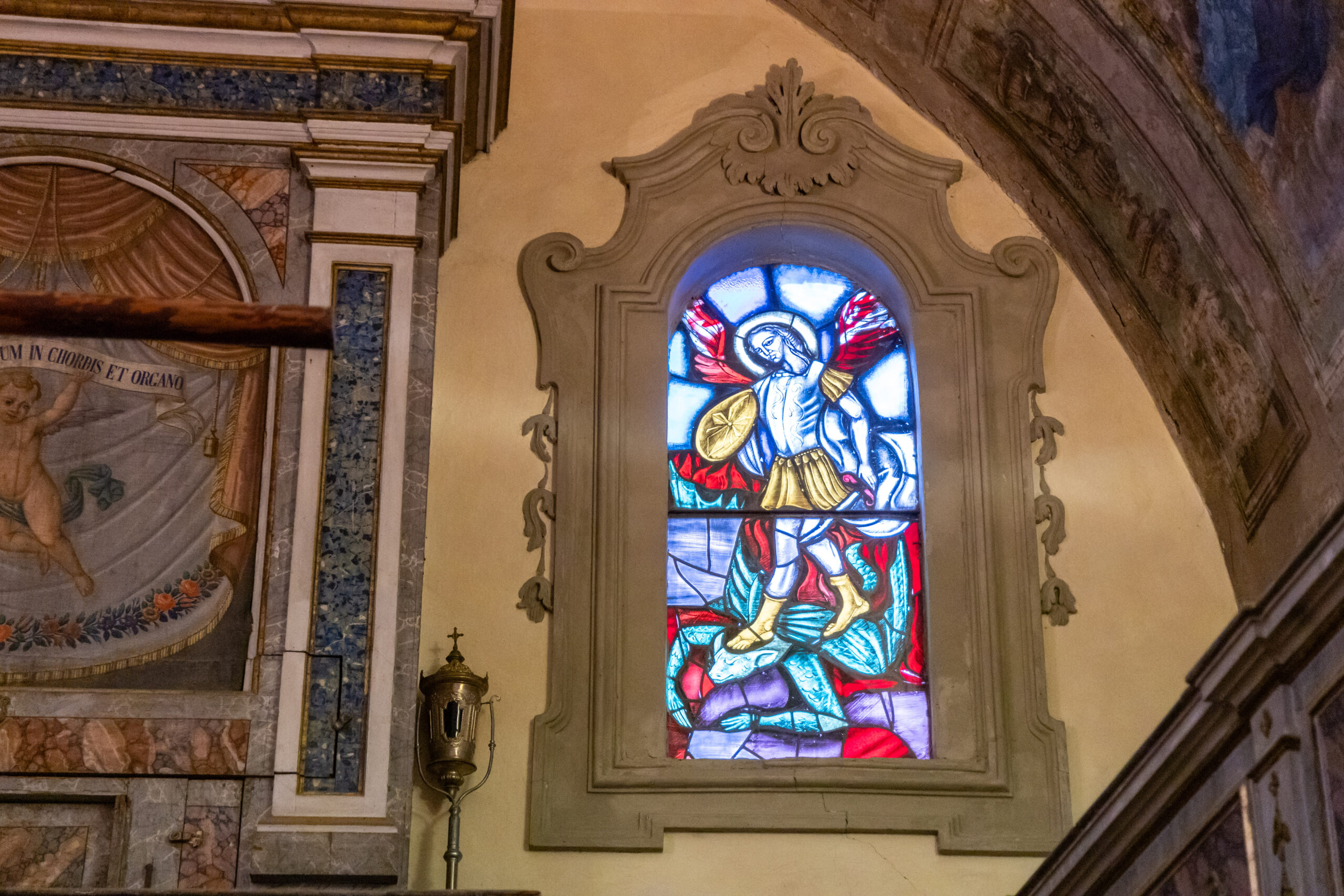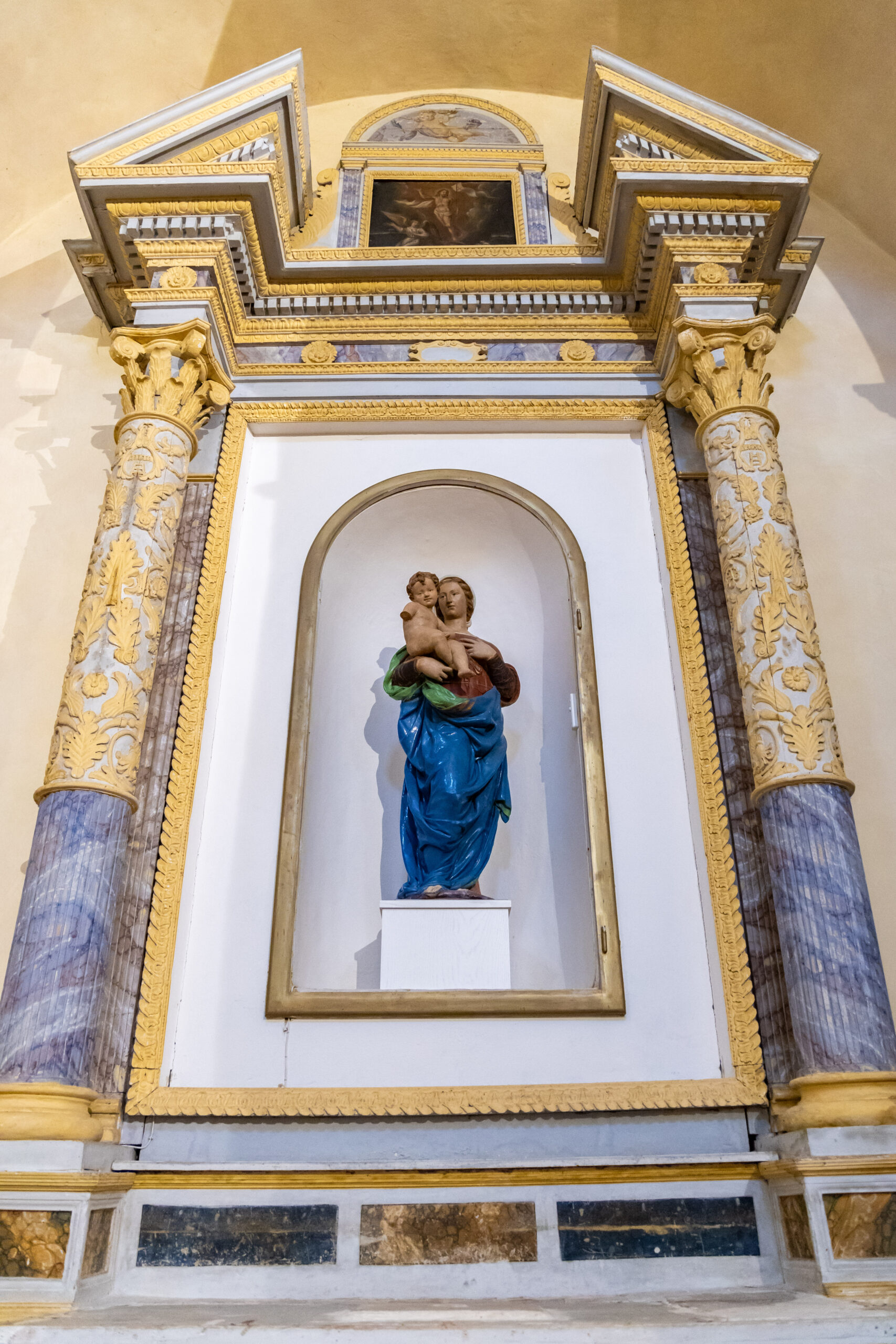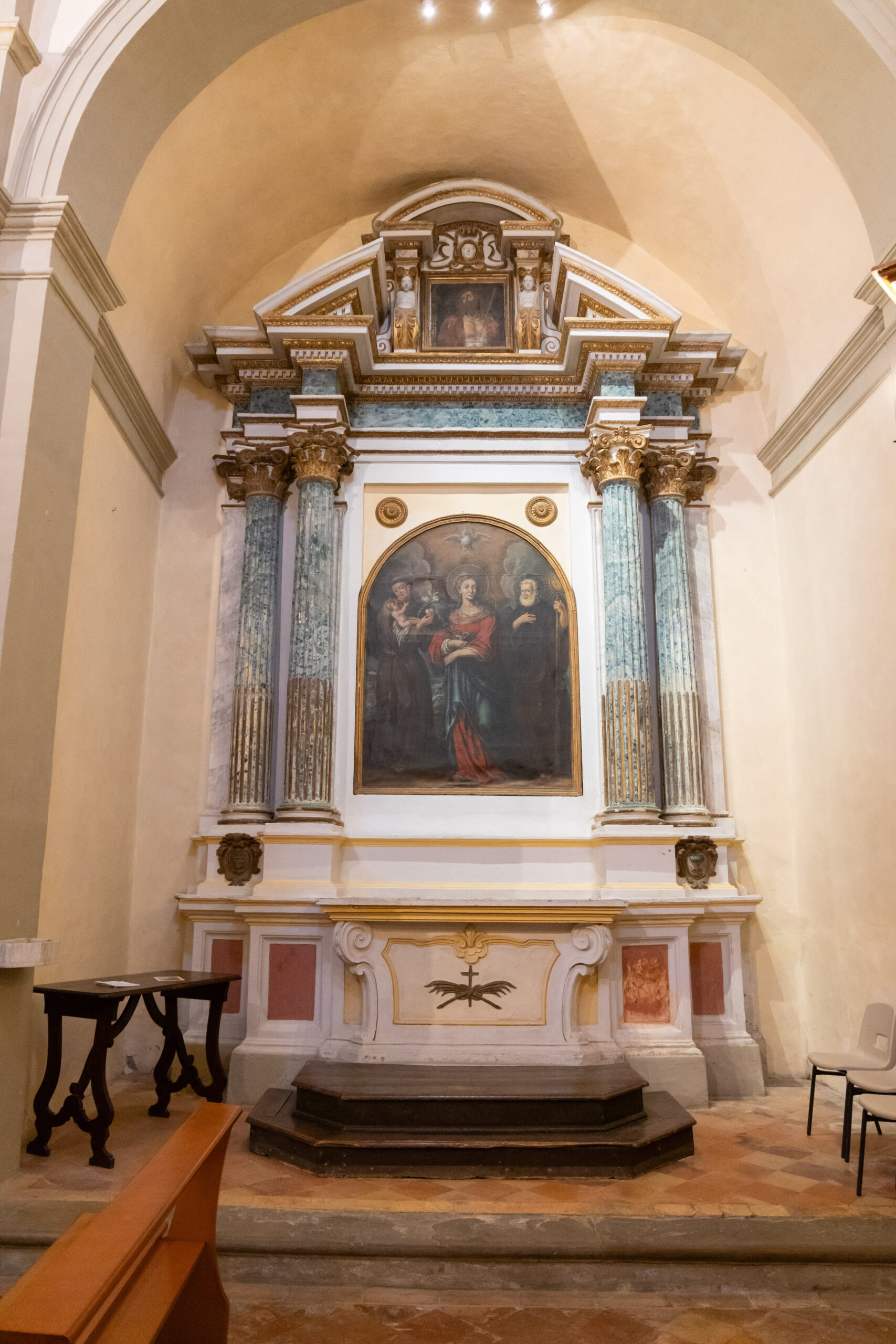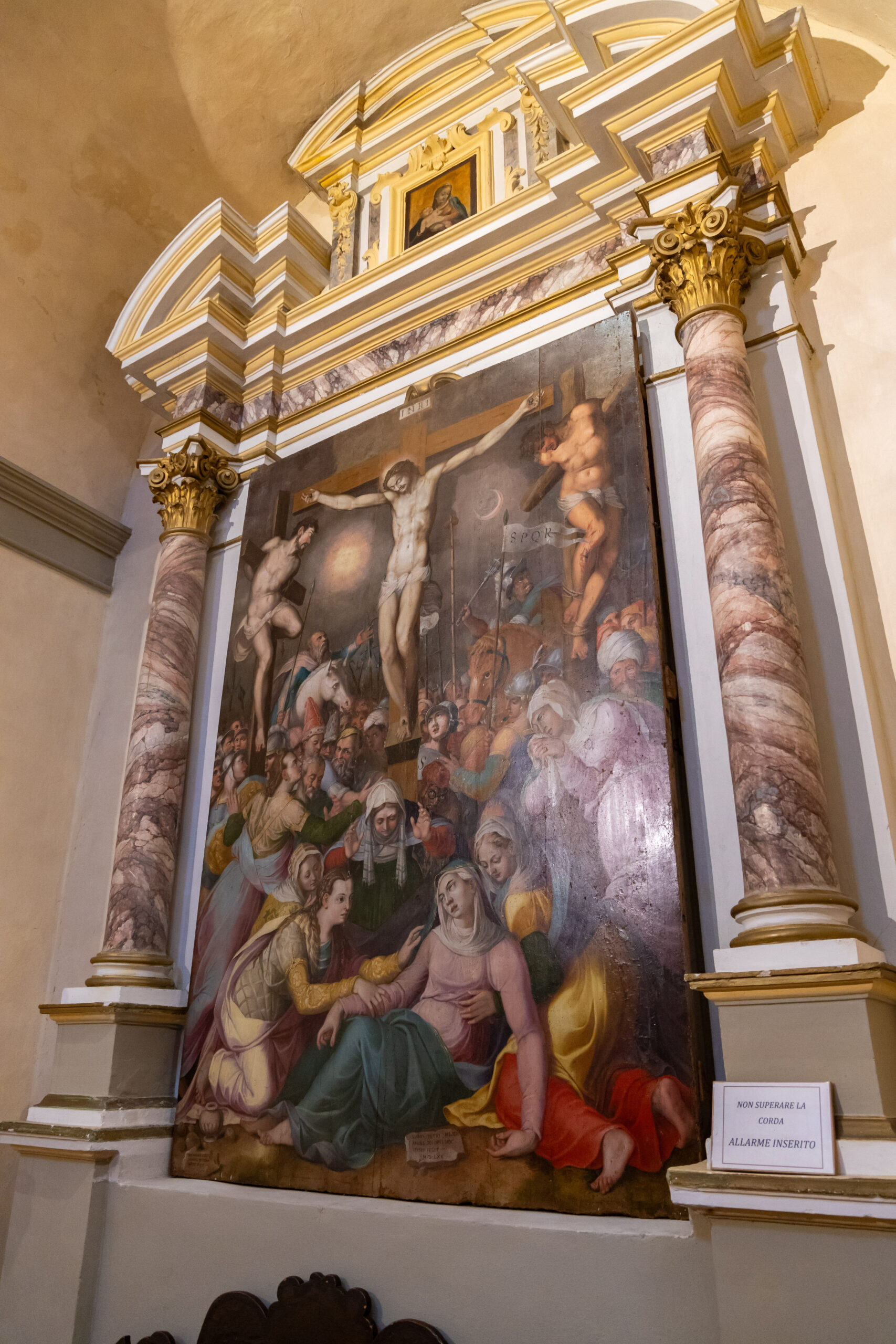the church
Located in the highest part of Citerna and built by the Confraternity of the Holy Sacrament between 1680 and 1682, the church features a simple architecture and a facade characterized by a central rose window. The interior, with a single nave and three chapels on each side, houses a unique square choir with a barrel vault decorated with frescoes. The church preserves important works of art dating from the 14th to the 20th century, including a remarkable fresco depicting the Crucifixion, attributed to Spinello Aretino. San Michele Arcangelo is also the patron saint of Citerna and is celebrated on May 8th.
the art
The most significant artwork hosted in the church is the Crucifixion by Nicolò Circignani, also known as Pomarancio, painted for the Church of the Holy Crucifix, which is now the Monastery of the Benedictine Sisters. Unfortunately, the church was damaged by a catastrophic storm in 1890 and completely abandoned after the earthquake in 1917. The painting, created in a Mannerist style, depicts 42 figures in various poses, giving the composition liveliness and movement.
The group of glazed terracotta Madonnas dating from the late 15th to the early 16th century are remarkable. Standing out is the Madonna with Child by Luca della Robbia, depicted standing and positioned in front of the second altar on the left. Next to it is the Madonna with the Child in her lap, attributed to Giovanni della Robbia (circa 1469-1529). Rediscovered among the ruins of the Chapel of the Immaculate Conception (600 AD), built by the homonymous confraternity and destroyed by the earthquake of 1917, it was restored by the Superintendence for Cultural and Environmental Heritage and placed in the Church.
Interesting artworks from the 17th century adorn the first two chapels: in the left one, there is an oil panel depicting Saint Nicola da Tolentino and the souls in purgatory; in the right one, there is another oil panel featuring Santa Lucia between Sant’Antonio da Padova and San Felice da Cantalice.
In the church, there is a bell dating back to 1269, which belonged to the ancient Church.
gallery
